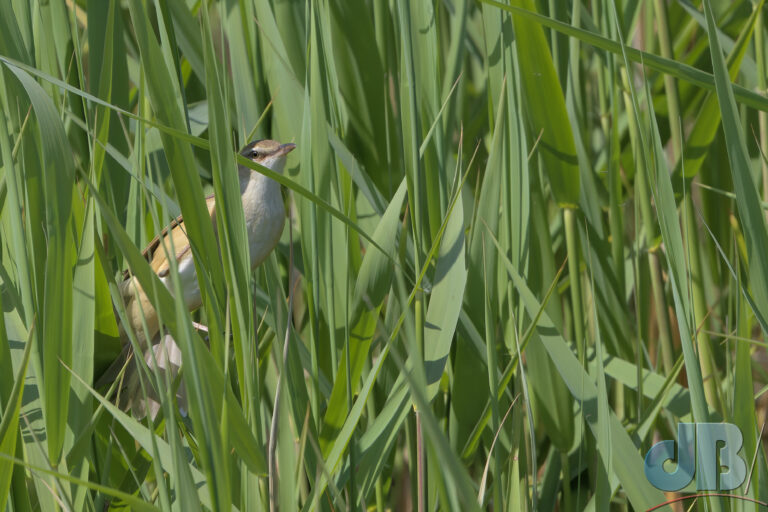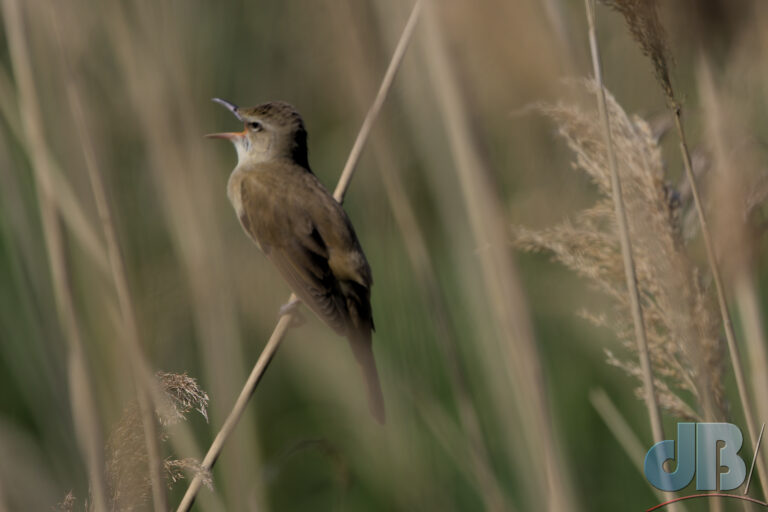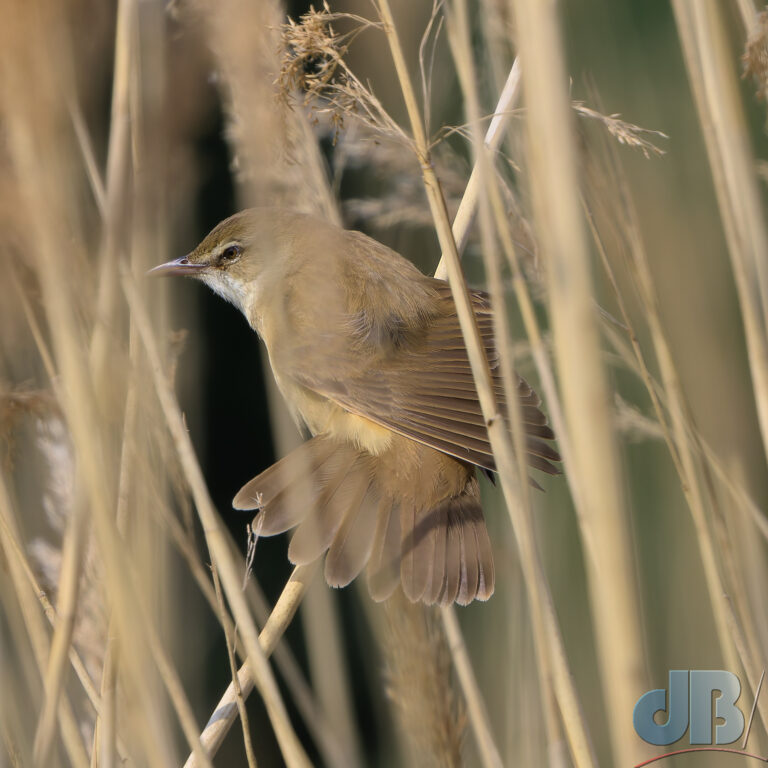We are lucky enough to have an unusual return visitor to RSPB Ouse Fen (Earith) – a male Great Reed Warbler, Acrocephalus arundinaceus.

This largest of the European warblers has turned up after over-wintering in sub-Saharan Africa, we assume, and landed in basically the same reedbed as he spent his time last summer. The species breeds across mainland Europe. I think there are a couple of dozen that end up in the UK each summer, but they’re spread far and wide, with almost no chance of meeting despite the males’ loud insistent song. I’ve added my recording of the bird’s song to Xeno-Canto.
There were a lot of birders trying to get photos of the GRW and one image I saw had him side-by-side with the much, much smaller Sedge Warbler. He is big! Some of the birders were suggesting this species is the size of a Common Starling…well…it might seem like that, but the measurements don’t quite stack up.

The biggest recorded GRW is a little bit smaller than the smallest Starling at least by wingspan. There’s some overlap between species in terms of length from the tip of its bill to the tip of its tail, but look at the difference in what they weigh! Here are the numbers:
Great Reed Warbler – 16–21 cm long, 25-30 cm wingspan, weighs 22 to 38 g
Common Starling – 19–23 cm long, 31–44 cm wingspan, weighs 58 to 101 g.
